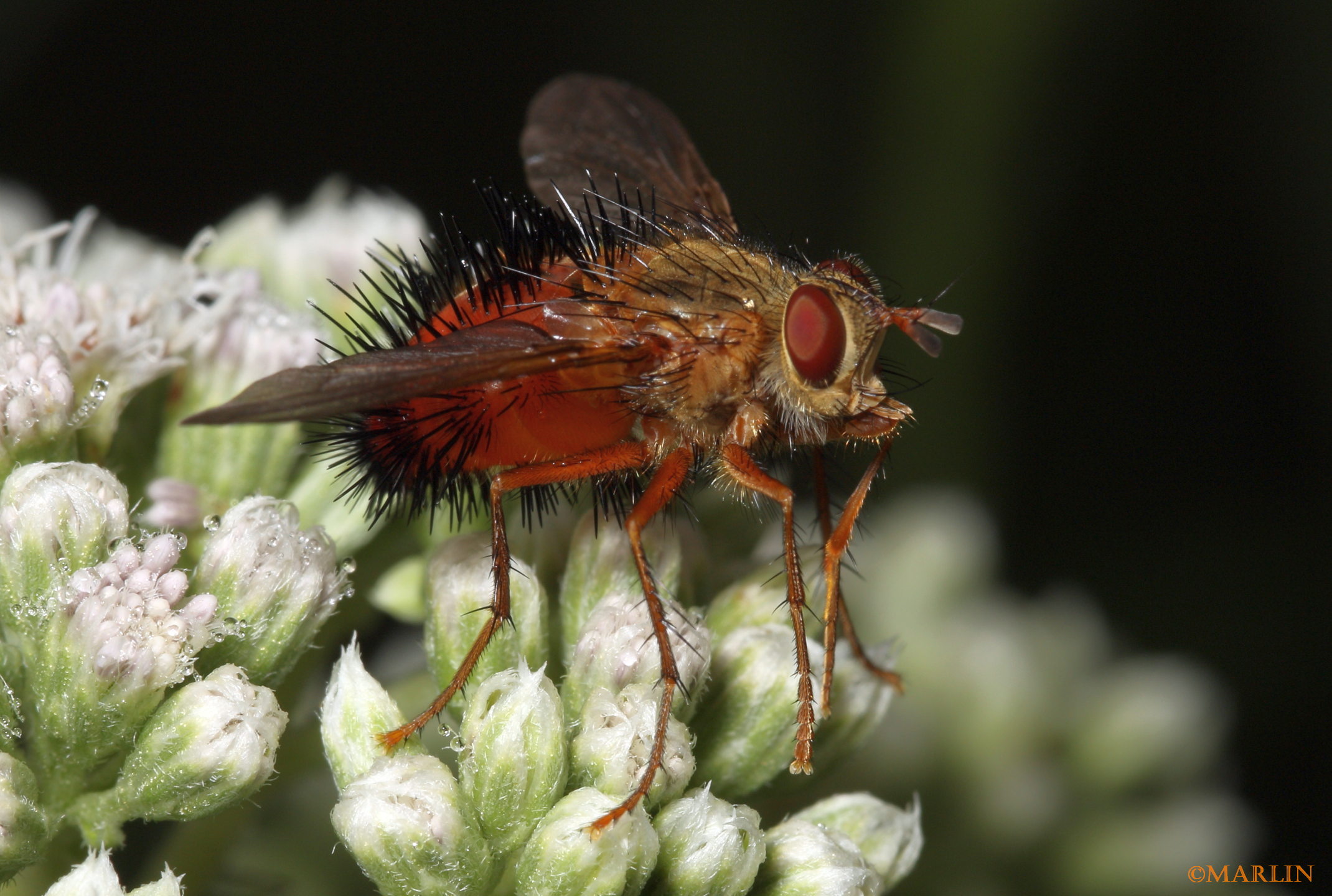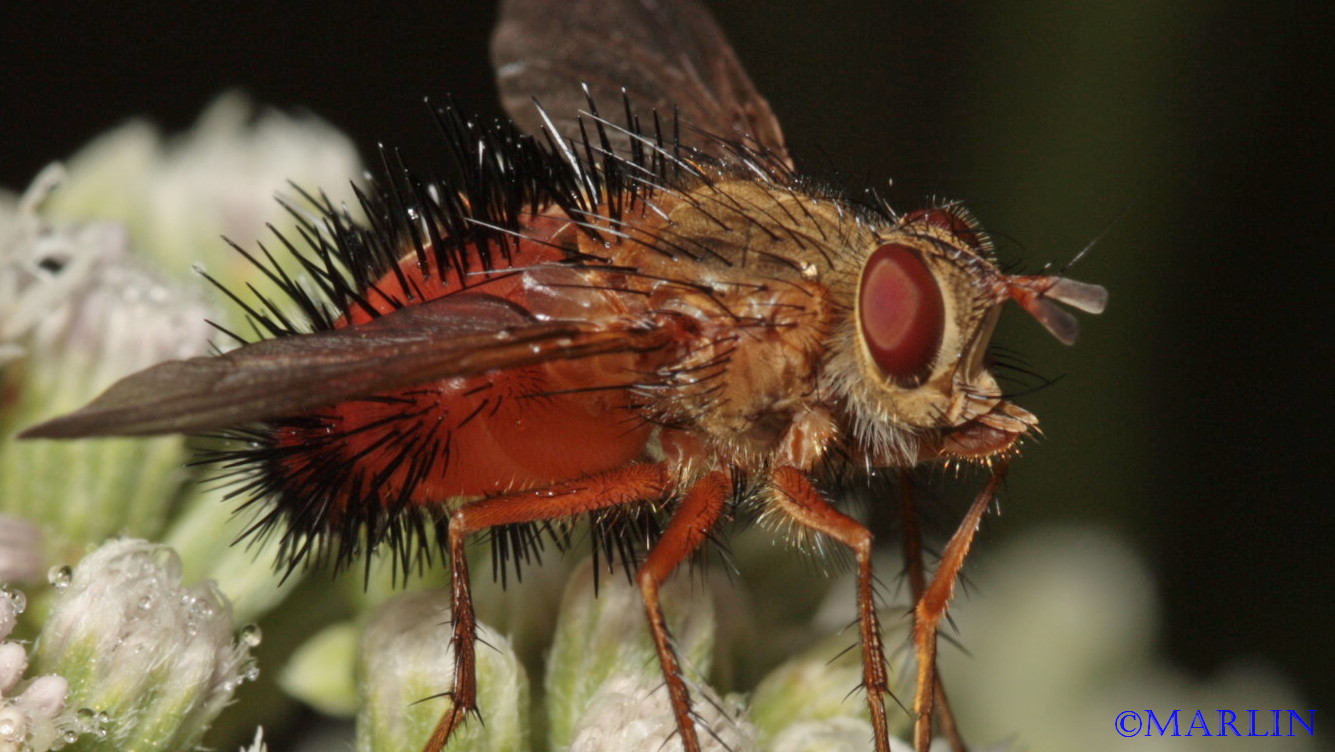Tachinid Fly – Hystricia abrupta
 Live adult fly photographed at Allegheny National Forest, Pennsylvania. Size = 15mm, wingspan 20mm
Live adult fly photographed at Allegheny National Forest, Pennsylvania. Size = 15mm, wingspan 20mm
All Tachinids share the parasitoid habit, and almost all of them are endoparasites of of other insects; in spite of their varied appearance all species of Tachinidae are alike in this characteristic. Insects most commonly parasitized by the tachinids are the larvae of the Lepidoptera (butterflies and moths) and the adults and larval form of the beetles, or Coleoptera. Other tachinids attack true bugs of the Hemiptera (Heteroptera), larva of Hymenoptera (bees, wasps, ants, sawflies), or adults of Orthoptera (grasshoppers, katydids, crickets and their kin). Rarely do Tachinidae parasitize other Diptera or any other groups of arthropods, however, some of these flies are known to attack woodlice (Isopoda).
Long Palps Adejeania vexatrix |
Short Palps Hystricia abrupta |
Few tachinids are known to be host-specific, although some species of the genus Phasiinae are limited to a few Hemiptera hosts. Many tachinids will attack insect hosts in 2 or more different orders. Many tachinids parasitize major agricultural pests of food or timber crops, and have potential for use as biological control agents, but most attempts at using them in such wise have been dismal failures.
Among the methods tachinids use to infect their subjects are the oviparous species that place large, macrotype eggs directly on the body of the host, the micro-oviparous, which place tiny, microtype eggs on foliage or other foodstuffs being consumed by the host, or the larviparous, which retain their eggs until maturity; these eggs hatch immediately upon being laid on or near the target. Some tachinids that attack bugs or beetles have piercing ovipositors much like wasps in the family Ichneumonidae.


